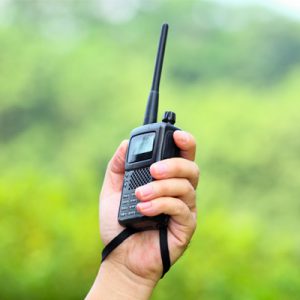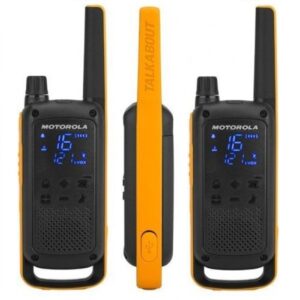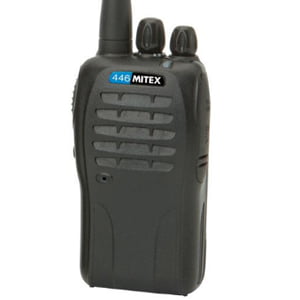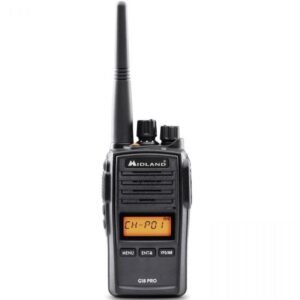A walkie-talkie (two-way radio) is often the only viable alternative to a mobile phone in a range of scenarios. Not only are you able to communicate with a large group of people instantaneously, but a walkie-talkie also walkie-talkie allows you to communicate in places where there is little or no mobile network coverage. From campers to construction workers, using a two-way radio is the primary and preferred method of communication.
However, purchasing a walkie-talkie is more complex than you may initially think. There are a large variety of two-way radios available from an array of manufacturers. These companies offer two-way radio handsets which differ significantly in price, features, capabilities, and functions. This brief introduction will guide you in choosing the best walkie-talkie for business or professional use.
Step One: Environment – Work or Leisure?
This is perhaps the most crucial variable when deciding on what two-way radio to buy. For example, if you require a two-way radio for a professional environment, then the chances are that you will need a more powerful handset, with enhanced battery life and range, as well as a greater number of channels. This will enable you to communicate with different groups of people simultaneously. Likewise, if you will be using a two-way radio in a harsh environment, then purchasing a waterproof walkie-talkie, or ATEX (Atmosphere-Explosive) certified radio is something you may want to look into. In contrast, if you need a walkie-talkie (or a multi-set) for leisure purposes such as hiking, camping, or sporting activities,
then you might only need a multi-channel radio with a decent range and battery life which isn’t too costly.
Step Two: Radio Frequencies – VHF or UHF?
Knowing what radio frequency you need is essential. There are two types of radio frequencies that a vast number of walkie-talkies on the market are capable of emitting. Those frequencies are VHF (Very-high frequency) and UHF (Ultra-high frequency). A VHF-enabled two-way radio can cover greater distances with less power, as VHF waves are longer. Ideal conditions to use a VHF radio would be on obstruction-free terrain. So if you work in the aviation, maritime, or outdoor security sectors, a VHF radio would be preferable. Similarly, if you intend to use your radio for leisure purposes, places like a golf course or an open field are VHF radio appropriate. A UHF-enabled two-way radio is a more popular option as the shorter wavelength can penetrate obstacles in indoor environments, such as thick concrete walls or steel structures. Glass, however, is an obstacle which UHF radios may have issues penetrating.
 Step Three: Distance and Range – How does it affect my radio?
Step Three: Distance and Range – How does it affect my radio?
Most two-way radio manufacturers cite the range of their walkie-talkies under completely obstruction-free conditions. So there is a significant difference between the advertised range and the actual range of two-way radio. Several factors can impact the range of a walkie–talkie. These include factors such as radio interference from other users, cars, woodland, and buildings. Digital walkie-talkies tend to have the best range. Furthermore, if privacy is an issue, digital radios cause their frequency to scramble 1000 times a minute. This makes it difficult for others to interfere with your channel. You can also purchase two-way radios which can transmit on both digital and analogue frequencies.
Step Four: Power – How much do I need?
The general rule of thumb for walkie-talkies and power is that for every 1 watt of power = 1 mile of coverage. The higher the wattage, the higher the range. However, some professional radios with 5 watts of power only achieve a range of 3 miles. This is due to obstructions and weather conditions. Furthermore, checking what type of batteries a walkie-talkie has may be of interest to you. Most modern radios use lithium-ion (Li-ion) batteries which are high-capacity and perfect for day-to-day use. On the other hand, some radios use Nickel-Metal Hydride (NiMH) batteries which are popular due to their high durability and resistance to impact. Also, NiMH batteries tend to charge quicker, one of their main selling points. They are however sensitive to heat which can reduce their charging capacity over time.
Step Five: Licensing – Do I need to buy one?
Purchasing a license will enable you to operate under secure frequencies with minimal outside interruption. In order to operate licensed radios, it is a legal requirement that you purchase a radio license from OFCOM which is the British regulatory body for communications. A license costs £75 for 5 years, with an unlimited number of radios that can be applied for use under your given frequencies
Our recommendations:
Motorola TLKR T82 Extreme
Rugged and weatherproof license-free radios – an ideal tool for intensive communications in extreme environments.
Key features:
- Up to 10km range
- 16 channels and 121 privacy codes
- Hidden screen display
Mitex PMR446 Xtreme2 UHF Radio
The IP66-rated Mitex PMR446 Xtreme2 Two-Way Radio was designed with versatility and ease of use in mind; thus, it is perfect for use in harsh environments.
Key features:
- Up to 12km range
- IP66 Rating
- 16 channels
 Midland G18 Pro
Midland G18 Pro
The Midland G18 Pro two-way radio is a very reliable and easy-to-use professional walkie-talkie with VOX and SCAN functions for hands-free communications.
Key features:
- Up to 12km range
- 99 PMR446 channels
- IP67 Rating

 Step Three: Distance and Range – How does it affect my radio?
Step Three: Distance and Range – How does it affect my radio?

